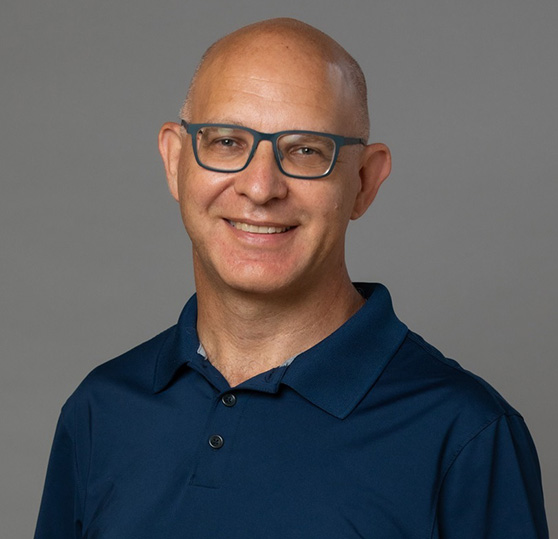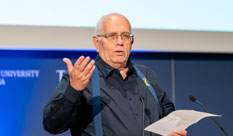More:
News & Stories
SPOTLIGHT - Dr. Yuval Dorfan
Q&A with Dr. Yuval Dorfan, Senior Lecturer in the Faculty of Electrical and Electronics Engineering.

Dr. Yuval Dorfan
Bioconvergence is not only the latest buzzword in Industry but also a reflection of the growing synergy between the seemingly disparate fields of biology and engineering. We met with Dr. Yuval Dorfan, who is among those helping to pioneer this field in Israel, to hear about his current research activities and efforts to promote this bourgeoning concept in Israel.
Bioconvergence is a 21st century transdisciplinary and revolutionary trend that merges biology and engineering, the synthesis of which has the potential to resolve a broad spectrum of real problems which will encompass the entire innovation and innovation -academic – industry ecosystem. When paired with classic engineering, it can help provide capabilities which go far beyond those of a single discipline.
To give a concrete example, Prof. Shimshon Belkin from HU is using engineered bacteria (microbial reporters) to discover buried landmines. In order for this biological process to have maximal practical application, however, classical engineering must be employed to develop a drone to spread the bacteria and to generate a map of where the landmines are located – effectively drawing on both fields to increase impact.
The understanding that scientific disciplines in life sciences, engineering, and computerized systems, when synergized, can yield boundless solutions when used together, has led to the mega trend of bio-convergence. Indeed, biology and technology – the two pillars of biotechnology-aren’t as hard to reconcile as previously thought. The overlap between fields like nanotechnology, engineering, mathematics, computer science, data science has revealed a powerful dynamic that not only can improve existing practices, but also provide new solutions to existing problems.
Before joining HIT a year ago, I conducted postdoctoral research at MIT, where I mainly dealt with synthetic biology of bacteria. It was during this time that I realized the great potential of bioconvergence and how it can contribute to sustainability. I recognized that my background in engineering and synthetic biology, as well as my management experience in the hi-tech & biotech industries, ideally position me to effectively implement this concept. In fact, one of the main impetuses for my research in recent years is the desire to develop new products that improve the state of sustainability in the world. I think that bioconvergence can make a significant impact on sustainability and climate change.
We are currently implementing the concept of bioconvergence to enable better handling of the corrosion of metals, which is a serious problem in shipping and construction. Corrosion is typically considered an electrochemical problem.
But, in fact, in almost all corrosion, the dominant process is not electrochemical but biological. Bacteria like to stick to metal, certainly if there is some moisture on it and other elements they need to thrive. It turns out that bacteria and sometimes also other microorganisms significantly affect the spread of corrosion—either suppressing it or accelerating it. And this led us to propose that bacteria can be used to detect corrosion foci. This is particularly useful in the shipping industry. Corrosion does not start on the entire side of a ship.
So, if I could identify the corrosion foci before it becomes pronounced and widespread, I could repair corroded spots while the boat is in the water instead of taking the whole ship out and scraping off the paint, drying the outer plating, coating it anew and then returning it to the water, as is done today. This will afford the ship’s owner a larger interval between outer plating coating treatments. I believe our method is both sustainable and economical, and the great interest of the construction and defense industries in this technology greatly supports this claim.
This research project, which is in collaboration with Dr. Ilana Kolodkin-Gal (Faculty of Agriculture, Hebrew University, Rehovot) is divided into several parts. We have students working on the detection of corrosion by all kinds of methods. We already have indications that there are many ways to detect corrosion foci. The detection method will likely incorporate biology, but it may be that most of the solution is classical engineering. And that, in my eyes, is bioconvergence, because it is not only that the problem has a biological source but also that the solution will contain bio-engineering elements. Another part of the project has to do with suppressing the rate of corrosion. I envision a device that surveys the boat’s outer plating and, upon detection, eliminates the resident biofilms, thereby slowing down the spread of corrosion.
The main problem with the current outer plating recoating treatment, beyond the prohibitive cost and cumbersome process which keeps the ship on shore for months, is that some regulators no longer allow the use of current paints because they are very harmful to the environment. Extending the time lag between recoating treatments, therefore, is a highly sought-after solution, which also contributes to sustainability, by decreasing the amount of toxic chemicals introduced into the marine environment.
It can also be used to detect harmful microorganisms, which is exactly what I am seeking to achieve in a collaborative project with Prof. Rachela Popovtzer from Bar-Ilan University's Institute for Nanotechnology and Advanced Materials. We are developing a biochip that can detect pathogenic bacteria. It can be used, for example, at airports to detect the presence of virulent bacterium such as anthrax. The biochip will be able to confirm not only that there is anthrax DNA but also that an active anthrax bacterium is present. When the bacterium of interest enters the biochip from the surrounding air, it will cause the resident bacteria to express a gene that alters the electric current of the chip, a change that confirms the presence of the pathogenic bacteria.
So, we are together building a basic platform that can be adapted to various needs by changing the type of bacteria inside the chip to suit the pathogenic bacteria we are seeking to detect. In essence, we are infiltrating a bacterium with a different DNA which will obstruct and change the toxin, rendering it ineffective. This project is funded by the Israeli Ministry of Defense, and we are now looking for civilian applications for it. One option is sensors for water quality. Another is to detect pathogenic bacteria in humans. For example, if there is a suspicion that some type of bacteria is detected in a patient, nowadays, a stool sample is taken and subjected to a long process in the lab to find out which bacteria is present in the sample. Using our biochip, it will be possible to test the stool sample on-site and provide the answer within an hour. The detection will be also more reliable, since it only detects living pathogens.
It is moving in many directions. I think that almost every engineer will have to have some grasp of the notion of bioconvergence, because we are going to compete with those products which engineers typically thought were not biology-related. For example, engineers who are now developing processes to produce molecules on the industrial scale will wake up in a few years only to find that their entire expensive and polluting process has been replaced by a genetically engineered bacterium developed by bioconvergence scientists.
I believe that everyone in Industry needs to get into a bioconvergence ‘state of mind’. Practically, that means not only to train engineers to be proficient in bioconvergence but also to provide training for the entire Israeli ecosystem—from middle school to doctoral students, to executive training programs and more because I really think that everyone in the industry must know the field at least at the level of one course. And that is exactly what HIT is striving to do.
HIT is currently spearheading this concept in Israel, mainly by establishing a Master’s degree in bioconvergence. I was impressed by the strong endorsement this new program received from the Israel Innovation Authority and other players in the Israeli ecosystem. All the universities in Israel have researchers that implement bioconvergence, but none have a bioconvergence master's degree track, and there is almost no academic specialization in the world to date like the one we recently launched. The closest one in Israel is the graduate track that the Technion is now introducing, but theirs is specifically focused on bioconvergence for human health.
We also actively work to offer courses and seminars suited to the Industry, like the one I organized recently on campus.
I strongly believe that to be relevant to Industry, we must train corporate engineers who will find solutions which include biology in the solution. That is to say that we need to nurture engineers who have a firm grasp of biology and engineering to be able to draw on both disciplines to produce innovative solutions.
The more researchers who combine synthetic biology and bioconvergence with sustainability, the better our lives will be—and we will surely start living more synergistically with the world we live in.
Dr. Yuval Dorfan joined the Faculty of Electrical and Electronics Engineering at HIT-Holon Institute of Technology as a tenure-track faculty member, after three years as a research scientist in Prof. Christopher A. Voigt’s lab at MIT, which is one of the leading groups in synthetic biology. He has a strong background in electrical engineering (B.Sc. (1998) and M.Sc. (2001) in engineering). After an extensive career in the hi-tech and bio-tech industries, he earned his Ph.D.in Machine Learning, distributed computing, and signal processing from Bar-Ilan University.
His doctoral research done in close collaboration with the Israeli Aerospace Industry (IAI). During the past few years, Yuval focused on synthetic biology projects, drawing on AI and other computational tools in order to accelerate the Design Build Test Learn (DBTL) cycle, including applied projects. His new group at HIT has several collaborations with researchers from Ben-Gurion University, Bar-Ilan University, Hebrew University, and the Weizmann Institute, in which his team is leading the computational biology aspects. At HIT, Dr. Dorfan teaches courses in signal processing and has recently received the ‘green light’ to develop the new M.Sc. track program for bioconvergence. The program is a unique combination of existing engineering and bio-engineering courses and seven new courses.
- News & Events
New Collaboration with Sheba Medical Center will qualify nurses to work in a digital environment.
Collaboration between HIT Holon Institute of Technology, the teaching authority of the Sheba Medical Center, and the Sheba-BEYOND virtual hospital will allow training nurses in Israel and around the world to work in a digital...



 Additional programs
Additional programs
